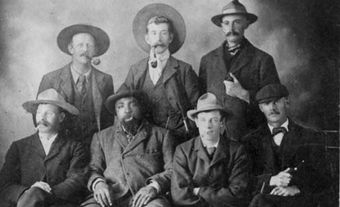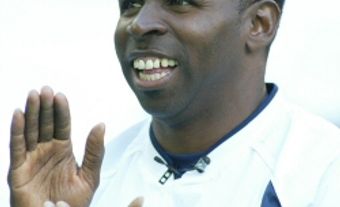The ex-gay movement, commonly referred to in popular culture by the phrase “pray the gay away,” is a predominantly conservative Christian movement that operates worldwide but is most prominent in the United States, Canada, Britain, and Australia. It is a loosely organized network of not-for-profit religious ministries and for-profit psychotherapy practices devoted to the management and attempted elimination of what it considers sinful and abnormal same-sex desires and behaviours. The ex-gay movement is primarily operated and supported by Christian churches that identify as fundamentalist, evangelical, conservative Roman Catholic or Mormon, and by private psychotherapists often associated with those same Christian traditions.
A Hybrid of Psychology and Religion
Although there is also a smaller Jewish wing of the movement, ex-gay change efforts usually mix psychological theories rooted in now-discredited psychoanalytic and behavioural practices from the mid-20th century with primarily Christian traditions of confession and prayer. The movement claims to help people who experience unwanted same-sex desire turn towards the “truth” and change their sexual orientations. The most well-known religious practice of the movement is prayer and the most well-known psychological practice is reparative therapy, sometimes called conversion therapy. However, the movement largely revolves around numerous religious and psychological practices, most of which are rooted in confessing one’s same-sex desires as sin and disease and submitting one’s will to strict religious and psychological authority.
Opponents of the movement cite studies indicating ex-gay therapy is both ineffective and harmful whereas proponents of the movement claim various levels of success, although their definitions of success frequently change.
Organizations
Until recently, the ex-gay movement’s various ministries and psychological practices operated under two larger umbrella organizations, both based in the United States: Exodus International was the religious face of the movement from 1976 to 2013, and the National Association for Research and Therapy of Homosexuality (NARTH) has been the “secular” psychological face of the movement since 1992 (in 2014 NARTH folded itself into a new organization it created: the Alliance for Therapeutic Choice and Scientific Integrity). The smaller Jewish wing of the movement operates under the umbrella organization Jews Offering New Alternatives for Healing (JONAH). Since the closing of Exodus in 2013, a new Christian umbrella organization has emerged in the United States called the Restored Hope Network (RHN). In Canada, the movement operates most prominently through a Vancouver-based ministry called Journey Canada, formerly Living Waters Canada. Until about 2010, the movement also operated in Canada through a Toronto-based group called New Direction Ministries. However, in 2003 New Direction minister Wendy Gritter stopped practicing conversion therapy and in 2008 delivered a speech before Exodus International formally rejecting reparative therapy. New Direction has since worked to build bridges to those outside the heterosexual mainstream without promoting sexual orientation change. Journey Canada continues to minister to people who seek to change their sexual orientation.
Birth of the Ex-gay Movement
The ex-gay movement was first formed in 1973 within months of the American Psychiatric Association (APA) declassifying homosexuality as a mental illness. Although it emerged in part out of the Jesus “hippie” movement of the early 1970s, the phenomenon was primarily a response to declassification. Prior to the 1970s, Christianity was largely mute on homosexuality, responding in the early and mid-20th century either with quiet expulsion and excommunication or by deferring entirely to secular psychiatry and psychology. Following declassification, however, the ex-gay movement emerged to fill the therapeutic void and it quickly began to take shape through the independent creation of several small church ministries across the United States and Canada. Coming together under the leadership of Exodus International in 1976, the movement soon formed links with several mental health practitioners who, in spite of declassification, were using the newly created diagnostic category “ego-dystonic homosexuality” to continue treating lesbian, gay, bisexual and transgender (LGBT) patients distressed over their homosexuality. Whether using religious methods, psychological methods, or both, in nearly all cases counselling and treatment began with the voluntary confession of one’s secret desires as unwanted sexual sins and illness.
The movement grew throughout the 1980s, fueled in part by an anti-gay media campaign initiated by the Christian Right in the late 1970s and by the AIDS crisis of the 1980s. Although it expanded internationally, until the late 1990s it remained largely unknown outside evangelical, fundamentalist, conservative Catholic, and Mormon Christian communities. When the movement was acknowledged and justified publicly, it was mostly justified biblically. That changed in 1992 when NARTH joined Exodus as an arguably “secular” ex-gay umbrella organization created to promote what it called reparative therapy, a confessional practice designed by Christian psychologist Elizabeth Moberly rooted in both psychoanalysis and behaviourism. Co-founded by Catholic psychologist Joseph Nicolosi, Jewish psychiatrist Benjamin Kaufman, and Freudian psychoanalyst Charles Socarides, NARTH (now the Alliance for Therapeutic Choice and Scientific Integrity) is a psychological organization that argues the ex-gay movement can be justified through the science of psychology as well as through Judeo-Christian scripture.
Advertising Ex-gay Change in the Public Sphere
In the summer of 1998 the movement “came out of the closet” and announced its existence to the world by joining 15 different Christian Right lobby groups to launch a national newspaper and television advertising campaign. Using the confessions and testimonies of ex-gay participants and supporters to promise “freedom from homosexuality,” the campaign redesigned the movement as a prominent and public component of the North American culture wars. The ads were printed in the New York Times, the Washington Post, USA Today, the Los Angeles Times, and the Miami Herald with the first television campaign launched in Washington in 1999. By that time, NARTH had also established a website. The ex-gay ads and websites were designed to create more media coverage, which they did. This ex-gay media included a high-profile 1998 story in Newsweek featuring an ex-gay couple named John and Anne Paulk. The movement’s first advertising blitz was not entirely successful, however, partly due to the coincidence of it occurring nearly simultaneously with the high-profile anti-gay murder of University of Wyoming student Matthew Shepard in October 1998. Nevertheless, the blitz still led to a decade’s worth of billboards, bus and subway placards, to several more newspaper ads, and to extended television and radio campaigns, with television ads also produced in Canada in 2008 by Life Productions Ministry. The Canadian ads appeared for a short time on a CTV station in Northern Ontario until complaints had them pulled.
Although the movement’s public promotion eventually became more successful, it was Dr. Robert Spitzer, the psychiatrist who headed the American Psychiatric Association committee that declassified homosexuality in 1973, that cemented the movement’s place in the public sphere. In 2001, he presented a study (published two years later) claiming some gay men and lesbians could change their sexual orientation through religiously mediated means. Although the study’s methodology, a telephone survey of confessional self-reports, was severely criticized, it created a media frenzy, partly because Spitzer had been considered a gay rights hero until that point. Since that study, the movement has been the featured topic on multiple American, Canadian, British, and Australian radio and television news, current affairs, and daytime talk shows; the subject of several American and Canadian feature documentaries and narrative films, including the American-produced This Is What Love in Action Looks Like and the National Film Board of Canada–produced Cure for Love; and it has become an object of ridicule and contempt in numerous prime-time dramas, television sitcoms and sketch comedy programs ranging from Law & Order: SVU and South Park in the United States, to Rick & Steve: The Happiest Gay Couple in the World and This Hour Has 22 Minutes in Canada.
The Ex-gay Movement Losing the Culture Wars
Since 2005, the movement has faced several high-profile setbacks. In 2005, a negative media frenzy erupted in the United States surrounding a gay teenager named Zach Stark who was forced against his will into an ex-gay residential program in Memphis, Tennessee, by his conservative Christian parents. As already noted, between 2007 and 2010, Canada’s New Direction Ministries left Exodus, rejected reparative therapy, and began building bridges to Canada’s LGBT communities. In 2009, an American Psychological Association report tabled in Toronto, Canada, found little evidence gay-to-straight therapy is effective, suggesting instead that it is probably harmful. In 2012, then Exodus president Alan Chambers publicly admitted at a Gay Christian Network conference that 99.9 per cent of ex-gays do not actually change. Later that same year Dr. Spitzer publicly and officially retracted his own 2001 study, confessed his methodological errors, and apologized to the gay community for any harm he caused. Following that, California and New Jersey outlawed reparative therapy for minors (bans that were upheld by the courts in 2013). Also in 2012, a consumer fraud lawsuit was filed against the Jewish ex-gay group JONAH in New Jersey leading to a partial summary judgement ruling against them in February 2015. As of 25 June 2015 courts ruled that conversion therapy is fraud and JONAH forced to pay $72,400 in damages. Finally, in 2013, Exodus International shut down, its termination preceded by a confessional apology to ex-ex-gay survivors from Alan Chambers both online and in an episode of the Oprah Winfrey–produced documentary serial Our America. Meanwhile, in Canada, the federal Official Opposition party, the New Democrats, passed a resolution in 2011 calling on the Government to disallow charitable status for any religious groups offering or promoting conversion therapy, and the Ontario New Democrats proposed legislation delisting conversion therapy from the Ontario Health Insurance Plan in 2015 that was unanimously passed by the Ontario legislature in June of that year.
Since 2005, numerous former ex-gay leaders in addition to Alan Chambers have denounced the movement and apologized for promoting it, including John Smid, who ran the Memphis ex-gay residential program teenager Zach Stark was forced into, and John Paulk, one of the ex-gay participants showcased in Newsweek following the first 1998 advertising blitz. Despite these many setbacks, the movement continues to operate under the leadership of the Alliance for Therapeutic Choice and Scientific Integrity (formerly NARTH) and the Restored Hope Network (RHN). There is also a growing “compromise” movement within some conservative Christian churches that officially promotes celibacy for gay Christians rather than change, although celibacy has quietly been promoted for some within the ex-gay movement since its inception.

 Share on Facebook
Share on Facebook Share on X
Share on X Share by Email
Share by Email Share on Google Classroom
Share on Google Classroom


